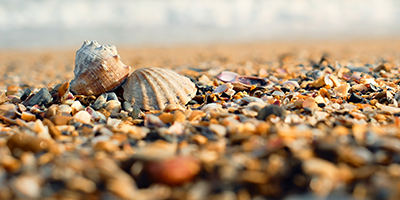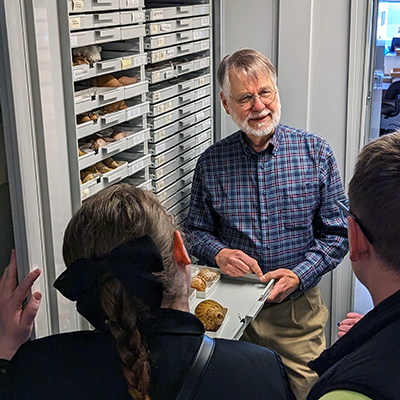The approximately 10,000 specimens and objects on display comprise fewer than 1% of the 22 million in our care. Every single one holds valuable information. Spotlight on Science shines a light on current museum research to uncover more about the past, present, and future of life on Earth. Visit Spotlight on Science to discover what museum curators, collection managers, collections assistants, visiting researchers, and others are investigating right now in Pennsylvania and around the world.
Current Spotlight on Science displays feature research from the Sections of Mammals and Mollusks. Future displays will highlight research from more of the museum’s 12 scientific sections.
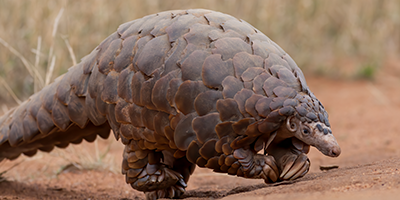
SPOTLIGHT ON SCIENCE: Mystery of the Mammals
The mammals that lived alongside dinosaurs were housecat-sized or smaller, but after the extinction of most dinosaurs 66 million years ago, placental mammals suddenly grew to the size of modern-day cows! John Wible, Curator of Mammals, and other researchers at the museum and around the world are digging into why. Spotlight on Science: Mystery of the Mammals invites visitors to learn how research teams are using methods like DNA and morphology to understand these mammals’ evolutionary relationships. See real teeth from Paleocene mammals and touch replica teeth to discover how researchers know what these creatures ate. Play a matching game to guess which mammals are most closely related.

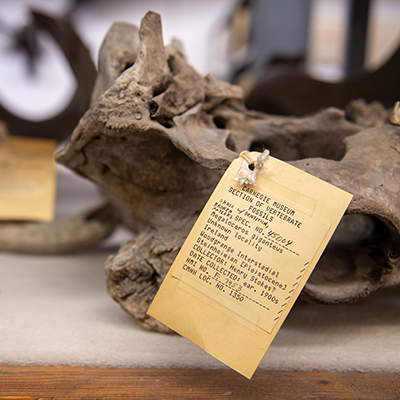
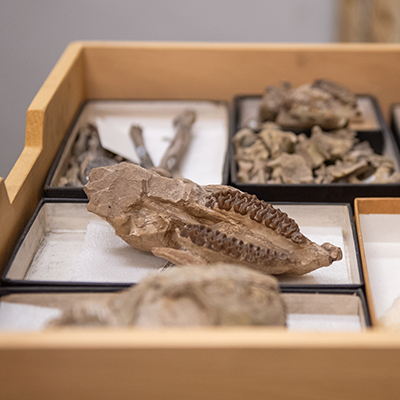
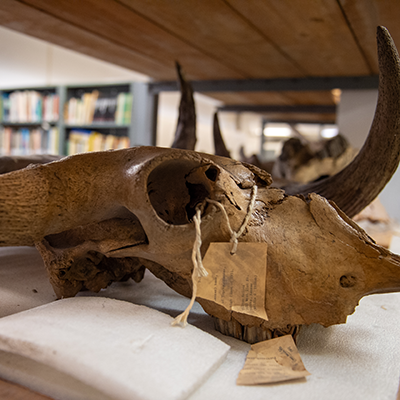
SPOTLIGHT ON SCIENCE: Where’d You Find That Shell?
Did you know that shells you collect on the beach can provide valuable information to scientists? In Spotlight on Science: Where’d You Find That Shell? explore research conducted by Assistant Curator of Mollusks Tim Pearce, Collection Assistant Sabrina Spiher Robinson, and other researchers on mollusks of the eastern seaboard. Understand what shells are made of, how they grow, and how to identify common shells and the mollusks that can live inside them. Learn about georeferencing and why it is important to record the locations of shells you find. Listen to a healthy oyster reef and discover why sea mollusks are important for future ocean health.
